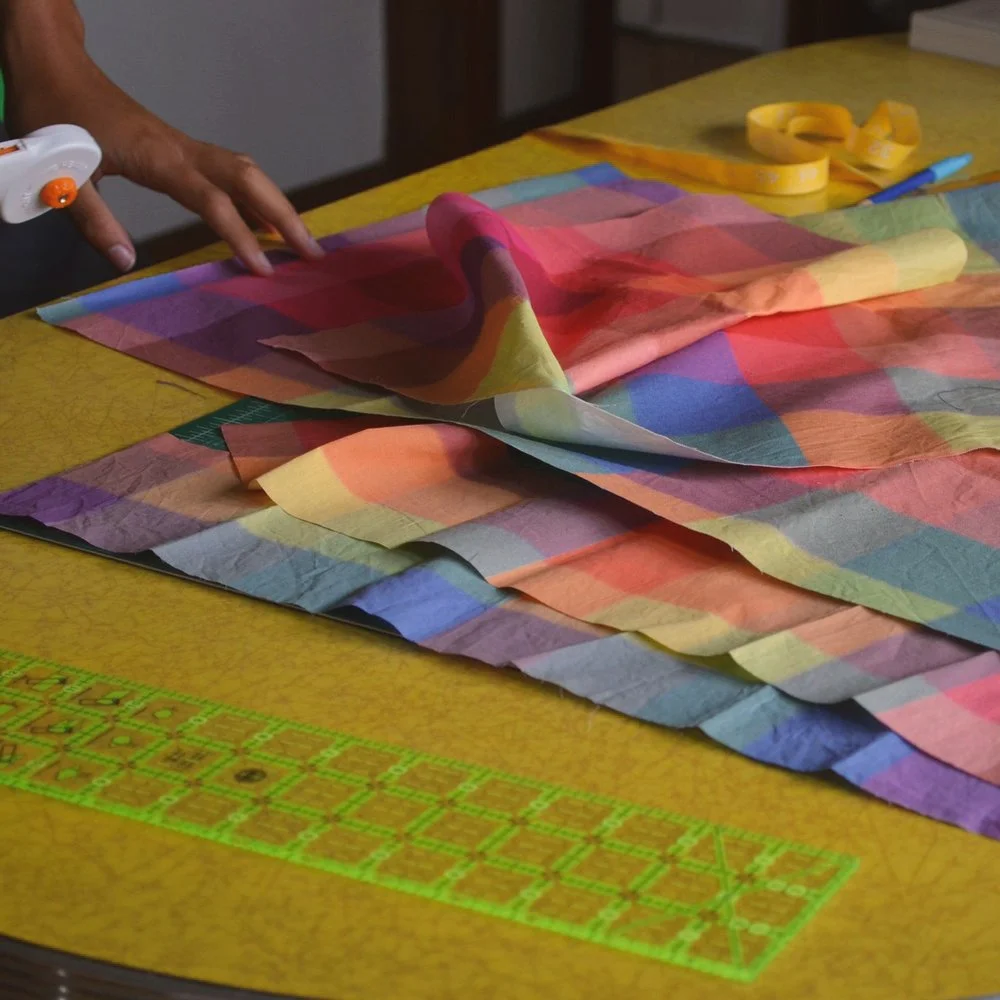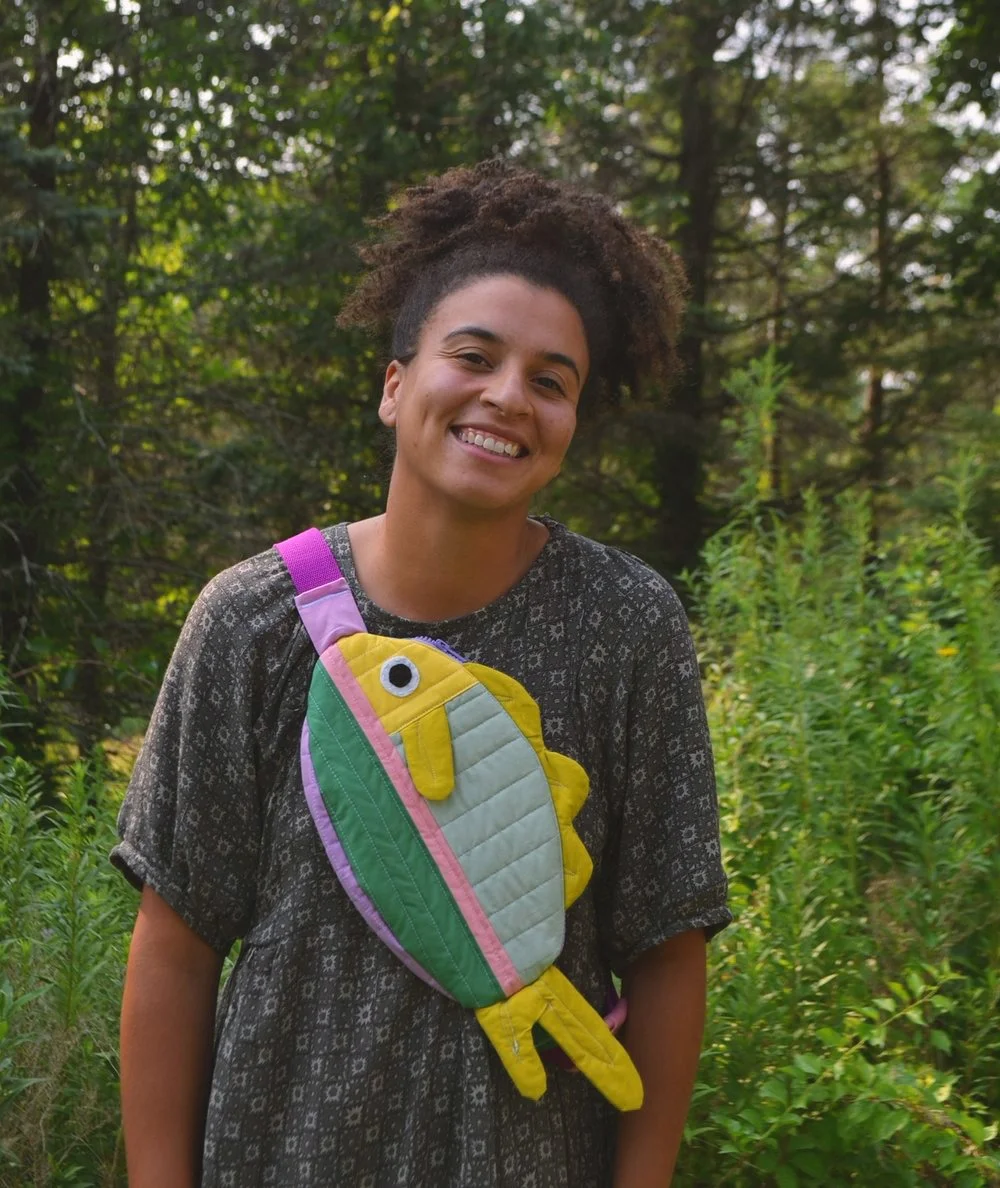A Conversation with Madison Moore on Building an Intentional Art Practice
Madison Moore is an artist whose creative world feels as thoughtful as it is expansive. A lifelong maker, she works across illustration, ceramics, writing, sewing, natural dyeing, gardening, and quilting. Raised in the Midwest and now based in upstate New York, Madison builds on an art practice that began very early in life and has deepened significantly over time.
As an author and illustrator of books for young people, she’s interested in exploring nature, themes of home and belonging, creativity, and the importance and beauty of the other living things all around us. Madison’s work has been recognized through artist residencies at Tofte Lake Center and Milkwood, and she’s currently developing two illustrated novels and several picture book projects. Her first picture book, More Than Just a Game (2021), honors the Black origins of basketball, while Bonnie’s New Old Outfit (2022) explores how crafting can breathe new life into what we wear.
Alongside her own storytelling, Madison is a dedicated book editor, having acquired and edited over 50 titles since 2020. She also runs a drawing club, designs sewing patterns, and pens a monthly newsletter about the joys and challenges of creative living.
I spoke to Madison about developing an art practice, finding inspiration, and her experience as a working artist.
As a multi-media and multi-disciplinary artist, I first noticed your work in sewing and textiles. I'd love to hear about when and where you realized you were an artist, and what led you to create more functional items.
I've thought of myself as an artist or wanted to be an artist my whole life. As a kid, I loved art, but not in any sort of serious way. I just liked making things and I thought it was really fun. When I went into high school, I did a lot of photography and film photography. And then I started mixing genres and that was the beginning of where I would embroider photographs and collage photos together.
That led to doing more embroidery on fabric and embroidery on garments. I went into college and wasn't originally going to pursue visual arts at all. Then in my sophomore year I switched one of my majors to visual arts, which I learned immediately and over time that it wasn't exactly what I wanted to do. I wanted to make things that were practical and used in everyday life. I wanted to make things that were built on narrative and story. So I felt at odds with what professors wanted from me and what critique groups wanted from me. It was just not the path that I was on.
When I left college, I was trying to figure out what that one thing was. Is it illustration? Is it painting? Is it ceramics? What is it? When I started sewing, which happened just on a whim, that showed me that I didn't actually have to choose one thing. It unleashed in me this connection between all of these different kinds of art. I started sewing and then I was like, you know what? I have time to sew and I have time to paint. And when I do both, I feel better doing both of them. And the work is better doing both of them. And I just have this creative flow. So I like saying that I’m a jack of all trades artist or a jack of all trades maker where I don't necessarily care about mastering something and putting in thousands and thousands until I'm as good at it as I can be.
I care about letting all of these things thrive together because it makes me feel the best as an artist. It makes my work have more inspiration and my work is stronger.
In terms of your practice, how does the lived environment, you said you're in upstate New York. Where did you grow up? And how is upstate New York influencing your work?Has nature influenced your work at all?
I think of it as a lifestyle really. I grew up in the Midwest. I'm from Indiana and I lived in Chicago for 8 years. I learned a lot about myself there, especially that I wanted to be in nature and so I moved up here into the Hudson Valley in 2023. [That move] was largely influenced by wanting a slower pace of life where I could have the time and the energy and the space for all these different kinds of art which were just absolutely overwhelming my apartment.
I just needed more space, I needed more time, and I needed to give it the energy that I feel it deserves. Nature is definitely the biggest influence in any of my work. I paint a lot of florals. I write and illustrate children's books and most of my stories are narratives about experiencing nature, finding home in nature, and finding comfort in nature. I do a lot of animal and plant journaling and a little bit of herbalism as well.
Being in this space for the past two years has really changed my connection to nature where it has become part of my lived experience as opposed to something I get to dabble in.
I speak for myself but leaving New York has felt hard and I know it's stifling me as an artist.
How have you made art a living? How do you balance your artistic practice with the need to make a living and pay bills?
I’m not a full-time artist, so I do have another job. I'm a book editor, which I like a lot and it does kind of meld with my practice. Moving up here, it's a very rural area, was a change in terms of art community. But it's also a place where a lot of individual artists are working and doing their own thing and finding that space for themselves too. That can be inspirational.
It's a hard balance of, "Am I doing this for myself, or am I doing this to make money?" And sometimes it's hard to answer that question and know which to prioritize. I try to do things that I want to do, and I think it can be successful. I also do a lot of stuff that's just for me, like sewing. A lot of people ask me to sew things for them, which is funny. I hadn't really experienced that with the other arts as much, but people are like, "Can you make me a shirt? Can you make me a dress? Can you make me a bag?" And I think setting up those boundaries has helped me a lot, where I realize that if I say yes to these things and I have all of my time taken up by money or other people or whatever, I just won't have the creative energy I need to keep this machine rolling, to keep the practice alive.
Who are your influences? Who inspires you as an artist?
A lot of my work is inspired by children's book authors and illustrators, as that is truly the root of my practice. It's something I feel I'm building toward in my career, and I hope it will be a long-term, lifelong thing.
Rebecca Green is one of my favorite illustrators; her work is also connected to nature, and I find her very inspiring. I also feature a creative spotlight in my monthly newsletter, where I try to list artists from various genres: sewists, painters, writers, and more. I really like Matt Rockefeller; he's also an illustrator of picture books and graphic novels. I recently completed a creative residency and retreat called Milkwood, which is run by the illustrator Sophie Blackall. Seeing a lot of her original work there was incredibly inspiring. It's also located in the Catskills.
How do you see your art practice making broader connections in the world?
I believe there is immense value in creating things for everyone, regardless of whether they identify as an artist or a creative. Creation can be anything: baking bread, writing a short poem, or doodling in a notebook. Any act of bringing something into existence is powerful and necessary. I try to convey this message and inspire people to discover what creation means to them, even if it's something they never take more seriously than a notebook they keep on a shelf. I believe it reveals who we are and makes us happier and calmer.
It makes us more engaged with the world. I definitely encourage that kind of attitude of finding where making can fit into your life and that drives me too because there's always a new way I can fit making into my life too.
I started a new series on my newsletter called “A New Practice" and it's about being a beginner. And the first one was about how to start sewing clothes if you want to start sewing clothes. I just really wanted people to see that it's easier than you think and you can just take that first step and try it once and you know it might change your life. It might be something that you love forever, you know.
Follow Madison on Instagram!







